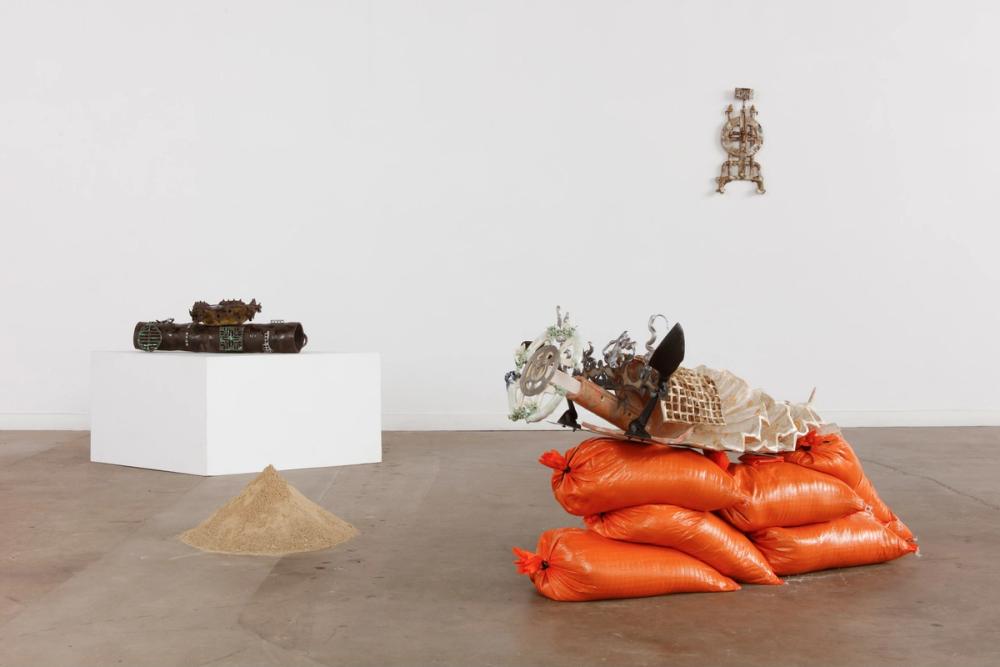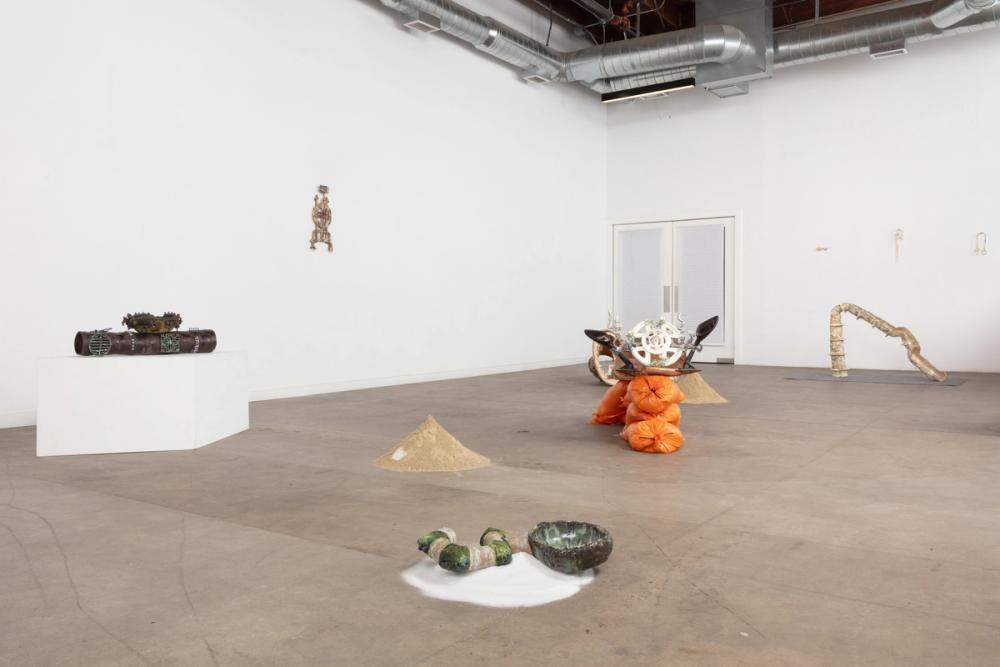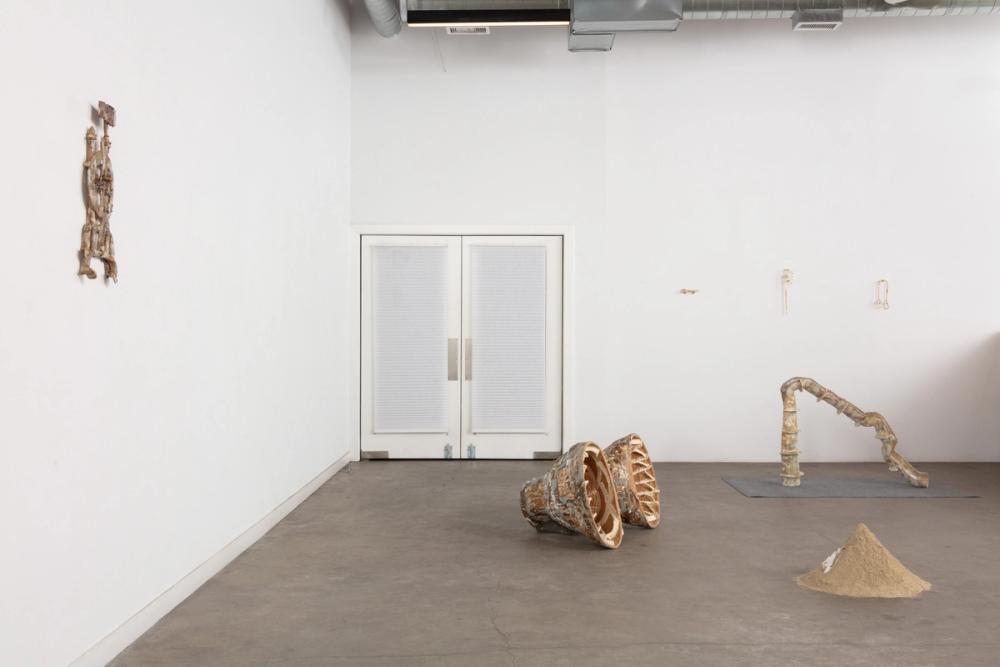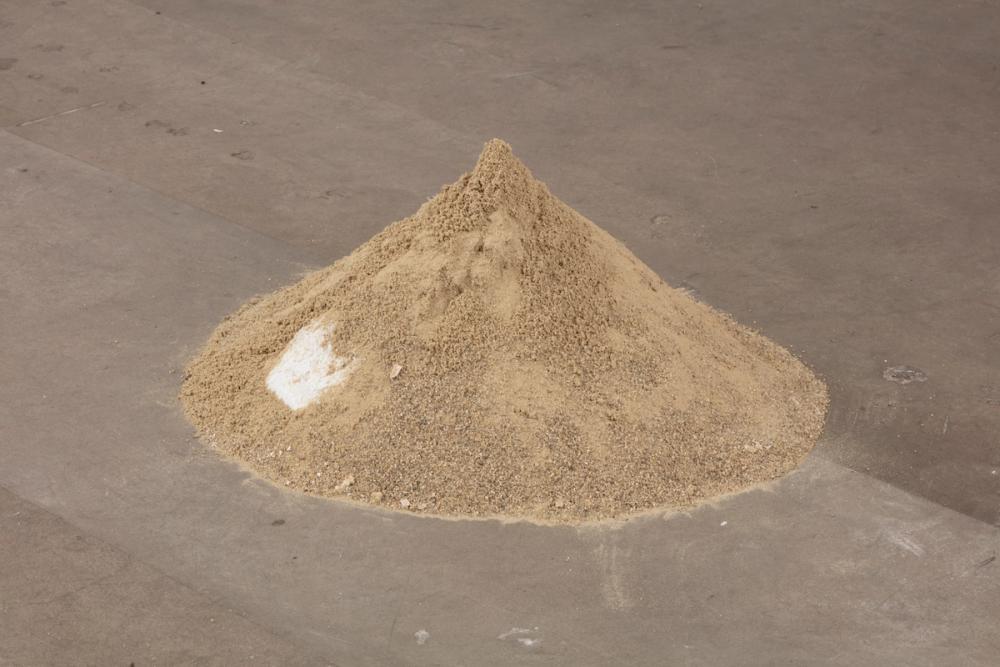Our world is created by our actions, and the gestures that we enact are embedded in the places and objects that we inhabit. These actions are performed to the point of becoming ritual, aggregated behaviors, and cultural memories, calcifying into sediment, ground (clay bodies), and our social fabric.
Within the mounting build-up of late-stage capitalism, the work of Laura Stinger addresses topics of climate change, eco-grief, resource extraction, AI, and invisible labor, through material shifts and performative dynamic systems. Collaborative movements and choreographed scores often use linguistic prompts based on AI models, industrialized processes, chemical byproducts, and grief support systems, scrambling and queering the codified associated gestures. Behaviors and perspectives shift through polymorphous interplay, giving way to unexpected alchemies. The body contorts, cares, extracts, transports materials and resources, leaches chemicals, crushes minerals, becomes commodified, cries, and simulates technology. The human, nonhuman, and inhumane intertwine. The body’s internalized mental and physical waterways mimic the hydraulic systems and machinations of violence enacted on the earth. Grief is just another by-product of the extraction process. Prosthetics extend the body’s relationship to its surroundings, blurring the boundaries between body, conduit, and tool, and critiquing where agency and accountability reside.
The score or rhythm of the extraction cycle found in mining in The Spigot Makes the Mouth Real is metered by the slow, labored turn embedded in the work Archimedes’ Prius. The title references the ancient hydraulic tool associated with the Greek mathematician Archimedes. Modernized iterations of the tool are still used today in lithium mining to pump and transfer the lithium-rich brine from underground reservoirs to evaporation ponds, ultimately leading to the creation of lithium batteries that power the tech industry, smart cars, and AI. But at what mental and material hidden cost? Kate Crawford, whose research is influential to Stinger, speaks to the systems connected to rechargeable lithium ion batteries in Atlas of AI, “They undergird the internet and every commerce platform that runs on it, from banking to retail to stock market trades…Many aspects of modern life have been moved to the “cloud” with little consideration of these material costs…The full-stack supply chain of AI reaches into capital, labor and Earth’s resources…”1
In The Spigot Makes the Mouth Real, this full mining arc—from geological time to consumerism—is embodied in high-lithium glazed ceramic sculptures, including pipes, vessels, prostheses, and drainage systems designed for bodily interaction. These forms are not just representations of infrastructure, but failures of it—leaking, burdened, and strained. In this space, performers will improvise within a structured score, becoming extensions of the installation. Ultimately, Stinger’s installation is a choreography of consumption and waste, of care and collapse. The performers become infrastructure—water moves through them, just as lithium moves through machines, just as grief moves through the body. This fragile integration between body and material echoes throughout the gallery with small sand formations interlaced with delicate salt crystals slowly crystallized through an evaporation process enacted over time. These formations recall the salt flats of the Atacama Desert in Chile, one of the worlds largest sites of lithium extraction, where flamingos once roamed and now fade from the landscape. Extending this meditation on systems and perception, the walls of the exhibition are lined with works that mimic mining tools, both old and new. Stinger intentionally flattens these objects, directly referencing the visual language of Google image search results. In doing so, Stinger subverts the typical process of turning flat drawings into 3D objects and draws the connection between AI and how the internet shapes our perception of representation.
In a recent paper released by Apple, The Illusion of Thinking, which tracks the “thinking” capabilities of Large Reasoning Models (LRMs), the authors deduced that artificial intelligence mimics the structure of logic, enacting optimized pattern matching within familiar and predictable contexts, but lacks comprehension, resulting in the illusion of reasoning that bypasses the substance.2 The worry is that humans might begin to emulate the optimization and efficiency of AI at the expense of circuitous detours, journeys, and mistakes that ultimately produce depth and real thought. What if we are unable to distinguish between “smart” outputs and lived experience?3
What if we keep ignoring the material and political traces within, for instance, a water cooler found in a corporate office, an electric car, or an AI? The work Amphora Prosthesis, named for the ancient vessel used to transport goods, reflects a deep time perspective, where the instantaneous time of capitalism embedded in a water cooler props up the ancient hard-wired supply chain dynamics lodged in the vessel. The disconnect can occur easily and insidiously within the speed of everyday living. Stinger’s work performs and exposes these contradictions and tensions as a form of resistance to the invisibility of these processes that seep into and permeate bodies and systems, while searching for the shape of physical and emotional support we give each other during grief, while tethered to these prostheses.4



